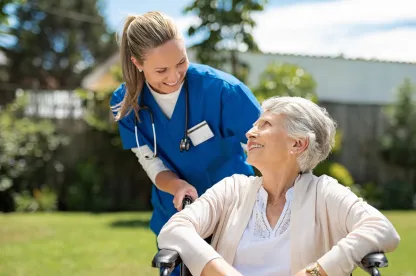On May 10, 2020, New York Governor Mario Cuomo issued Executive Order No. 202.30 seeking to address the two main sources of nursing home infections – those from staff who unknowingly carry the virus and residents carrying the virus who are transferred following hospitalization.
Executive Order No. 202.30
Executive Order No. 202.30 provides that any Article 28 general hospital shall not discharge a patient to a nursing home unless the nursing home operator or administrator has first certified that it is able to properly care for such patient. It further provides that any Article 28 general hospital shall not discharge a patient to a nursing home without first performing a diagnostic test for COVID-19 and obtaining a negative result.
Testing
In addition, Executive Order No. 202.30 requires the operators and administrators of all nursing homes and all adult care facilities – including all adult homes, enriched housing programs and assisted-living residences – to test or make arrangements for the testing of all personnel, including all employees, contract staff, medical staff, operators and administrators, for COVID-19 twice per week, pursuant to a plan developed by the facility administrator and filed with the Department of Health no later than 5:00 p.m. Wednesday, May 13, 2020.
Any positive test result is to be reported to the Department of Health by 5:00 p.m. of the day following receipt of such test result. Any personnel of a nursing home or adult care facility who refuse to be tested for COVID-19 pursuant to a plan submitted to the Department of Health shall be considered to have outdated or incomplete health assessments and shall therefore be prohibited from providing services to such nursing home or adult care facility until such testing is performed. Governor Cuomo assured testing would be available for this purpose at the time of his May 10, 2020, press conference.
Certification of Compliance
Executive Order No. 202.30 further requires the operators and administrators of all nursing homes and adult care facilities to provide the Department of Health a certification of compliance with this Executive Order and directives of the Commissioner of Health, and all other applicable Executive Orders and directives of the Commissioner of Health.
Further, the Commissioner of Health is authorized to suspend or revoke the operating certificate of any nursing home or adult care facility if it is determined that such facility has not complied with this Executive Order, or any regulations or directives issued by the Commissioner of Health, and if determined not to be in compliance, notwithstanding any law to the contrary the Commissioner may appoint a receiver to continue the operations on 24-hours’ notice to the current operator, in order to preserve the life, health and safety of the people of the State of New York. Any nursing home or adult care facility that does not comply with this Executive Order shall be subject to a penalty of noncompliance of $2,000 per violation per day as if it were a violation of section 12 of the Public Health Law, and any subsequent violation shall be punishable as if it is a violation of section 12-b of the Public Health Law with a penalty of $10,000 per violation per day.
Background
Executive Order No. 202.30 partially reverses the prior, March 25, 2020, order issued by the New York State Department of Health, which directed all nursing homes to comply with the expedited receipt of residents returning from hospitals to nursing homes. The order further provided that residents are deemed appropriate for return to a nursing home upon a determination by the hospital physician or designee that the resident is medically stable for return. The order directed that hospital discharge planners must confirm to the nursing home, by telephone, that the resident is medically stable for discharge. It added that no resident shall be denied re-admission or admission to the nursing home solely based on a confirmed or suspected diagnosis of COVID-19. It further prohibited nursing homes from requiring a hospitalized resident who is determined medically stable to be tested for COVID-19 prior to admission or readmission.
On May 10, 2020, the date Executive Order 202.30 was issued, Governor Cuomo stated, “we’re just not going to send a person who is positive to a nursing home after a hospital visit. Period. If there’s any issue, the resident must be referred to the Department of Health, which will find alternative care.” According to Governor Cuomo, the Department of Health, which regulates nursing homes, would find new quarters for residents that nursing homes felt they could not handle.
Statistics and Timing
New York holds the highest population of nursing home residents in the country (101,518) per Governor Cuomo. According to the Associated Press, more than 5,300 New Yorkers living in nursing homes have died from COVID-19. Additionally, on May 4, 2020, New York reported more than 1,700 previously undisclosed deaths at nursing homes and adult care facilities.
New York listed 22 nursing homes (mostly in New York City and Long Island) as having deaths of at least 40 residents, and 62 nursing homes with between 20 and 39 deaths. According to New York State health officials, 85% of all COVID-19 deaths are people ages 60 and above. It appears that Executive Order 202.30 will lessen the burden of nursing homes and long-term care facilities and hopefully decrease exposure of staff and residents to COVID-19. While reversal of the March 25, 2020, New York State Department of Health order is seen as a welcome relief by many, some say it is too late.



 />i
/>i

